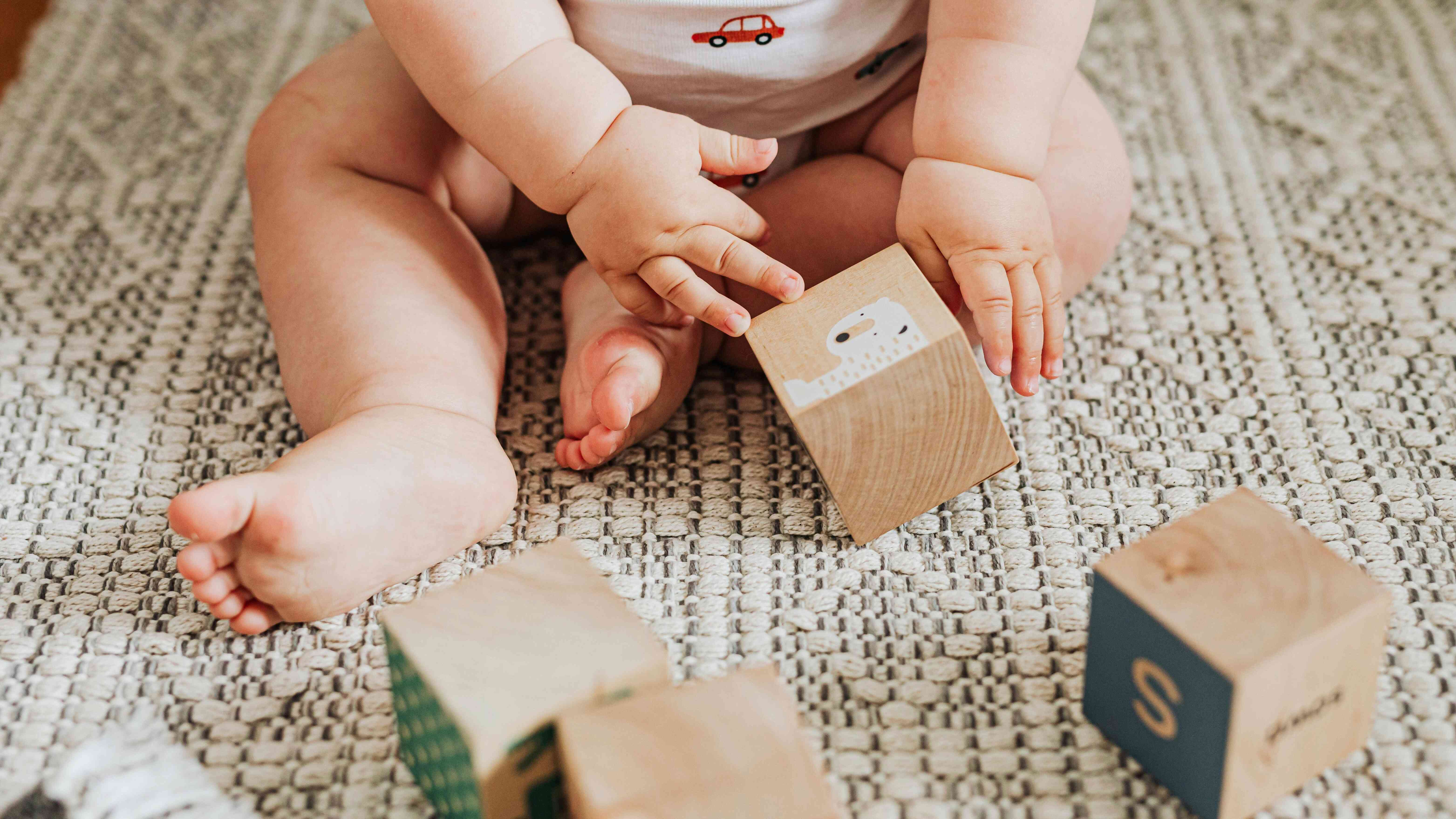How to fill Wake Windows 3-6 Months

For 0-3 months click here
The 3-6 month phase was one of my favorites! You are finally getting some positive feedback and encouragement from your little one– the smiles, the coos, watching them make connections and learn, it is truly the best! Here are some ways to facilitate 3-6 month development!
- Rotisserie chicken play! - The best place for your baby while they are awake is on the floor. While Tummy Time gets a lot of the spotlight, it is also important to try side lying and back lying positions. Treat that baby like a rotisserie chicken and allow them to have time on all sides. At this age, babies should be able to track objects across midline and will start reaching for objects. To encourage this, present toys that make noise, light up, and are novel, even kitchen spoons work! We are continuing to look for symmetry in different positions, pay attention to your baby’s limb movements and encourage movements on both sides.
- Tummy time - Tummy time is still beneficial and important at this stage! Now, your baby should be lifting their head, tracking objects, and reaching. Prop up a book to keep it interesting and present toys that they can reach for, listen to, etc. Tummy time mats are great to use to keep things novel. You can also introduce tummy time over a yoga ball to facilitate more movement and head control.
- Facilitating rolling - One of the big important milestones in this range is rolling. Be sure to roll your baby in and out of tummy time to encourage the motor plan. You can also passively roll the baby side to side holding their hands and feet together.
- Get outside - Outside time is still beneficial for you and for the baby! You cannot beat the sensory experiences from outside. You can take a walk, or set up a blanket with some toys. This is especially beneficial in the witching hour (that difficult period in the evening before bedtime).
- Reach the feet! - Encouraging your baby to reach for their feet is an important mini-milestone that will help them learn to roll. It is essential for both sensory development and core strengthening, and can be done in a supine, side lying, or reclined position such as in a stroller. To facilitate, place sock rattles on the baby’s feet, drape party beads over their feet, or simply place their hands on their feet.
- Tracking - Babies are starting to see more and more at this stage and are little sponges, constantly learning about new things in their environment! It is a great time to start and continue working on visual tracking. To facilitate tracking, hold a book, rattle, preferred toy, etc. about 6-12 inches away from their face. Starting at one side of the head, get the baby’s attention until they are looking at the object. Slowly move the object across their face allowing them to turn their head in response to the movement. If they do not follow right away or all the way across midline, try again and use more verbal cues. Visual tracking can help babies learn about depth perception, increase neck range of motion, and address oculomotor skills necessary for future readers! In addition, crossing the midline is always great for brain development! Babies should be able to turn their heads from the point where their chins are at their shoulders across to the other shoulder. If your baby cannot get their chin at least between their nipple line and shoulder, it may be a good idea to reach out to a pediatric OT or PT who can help with range of motion and look out for signs of torticollis.
- Splashing! - Splashing is a great activity for developing sensory systems! Babies at this age can splash with their hands in water on a tray during tummy time (provided they can hold their heads up for extended periods), or splash while sitting in front of a bucket of water, tray of water, or at the sink. This is a great way for babies to learn body awareness and gain more control over their hands. Placing their feet in water is also great for increasing awareness of the lower extremity to promote core strength and rolling.
- Magic baby - Babies love movement! At this time, they likely have some more head control and can be faced outward to see the world. Magic baby is a great trick that can help a fussy baby regulate, and provide some vestibular input to further improve movement and body awareness. To facilitate, hold baby against your chest facing outward (hint: lots of babies love this in front of a mirror). Then, move the baby up and down by doing squats, or around in a circular motion. If your baby was prescribed any head/neck stretches, this is a great way to get it done!
